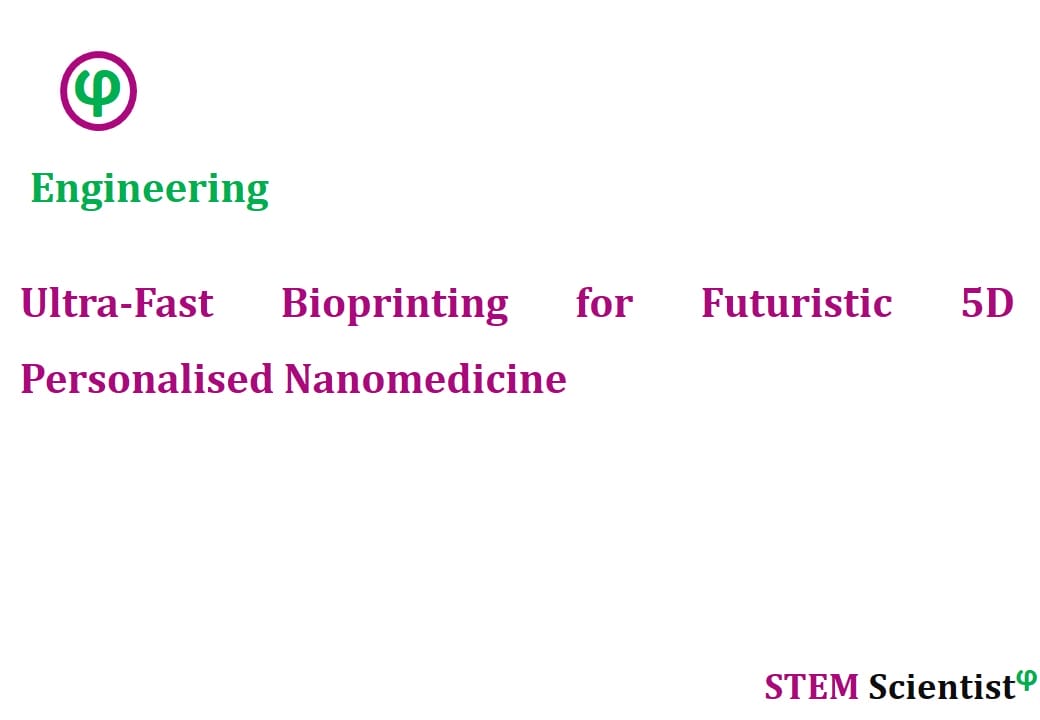
The following study was conducted by Scientists from Department of Medicine and Surgery, University of Parma, via Gramsci, Parma, Italy; CERT, Centre of Excellence for Toxicology Research, via Gramsci, Parma, Italy; Department of Engineering and Architecture, University of Parma, Parco Area delle Scienze, Parma, Italy; Unit of Surgical Sciences, Azienda Ospedaliero-Universitaria, via Gramsci, Parma, Italy; Centro Universitario di Odontoiatria, University of Parma, Via Gramsci, Parma, Italy; IMEM-CNR National Research Council, Parco Area delle Scienze 37/A, Parma, Italy;Unit of Vascular Surgery, Azienda Ospedaliero-Universitaria, via Gramsci, Parma, Italy;Humanitas Clinical and Research Centre, via Manzoni 56, Rozzano Milan, Italy;Unit of Vascular Surgery, Azienda Ospedaliero-Universitaria, via Gramsci, Parma, Italy. Study is published in Scientific Reports Journal as detailed below.
Scientific Reports; 10(1): 3205; (2020)
In-vivo Vascular Application via Ultra-Fast Bioprinting for Future 5D Personalised Nanomedicine
Abstract
The design of 3D complex structures enables new correlation studies between the engineering parameters and the biological activity. Moreover, additive manufacturing technology could revolutionise the personalised medical pre-operative management due to its possibility to interplay with computer tomography. Here we present a method based on rapid freeze prototyping (RFP) 3D printer, reconstruction cutting, nano dry formulation, fast freeze gelation, disinfection and partial processes for the 5D digital models functionalisation. We elaborated the high-resolution computer tomography scan derived from a complex human peripheral artery and we reconstructed the 3D model of the vessel in order to obtain and verify the additive manufacturing processes. Then, based on the drug-eluting balloon selected for the percutaneous intervention, we reconstructed the biocompatible eluting-freeform coating containing 40 nm fluorescent nanoparticles (NPs) by means of RFP printer and we tested the in-vivo feasibility. We introduced the NPs-loaded 5D device in a rat’s vena cava. The coating dissolved in a few minutes releasing NPs which were rapidly absorbed in vascular smooth muscle cell (VSMC) and human umbilical vein endothelial cell (HUVEC) in-vitro. We developed 5D high-resolution self-dissolving devices incorporating NPs with the perspective to apply this method to the personalized medicine.
Source:
Scientific Reports
URL: https://www.nature.com/articles/s41598-020-60196-y
Citation:
Foresti, R., S. Rossi, et al. (2020). “In-vivo vascular application via ultra-fast bioprinting for future 5D personalised nanomedicine.” Scientific Reports 10(1): 3205.


